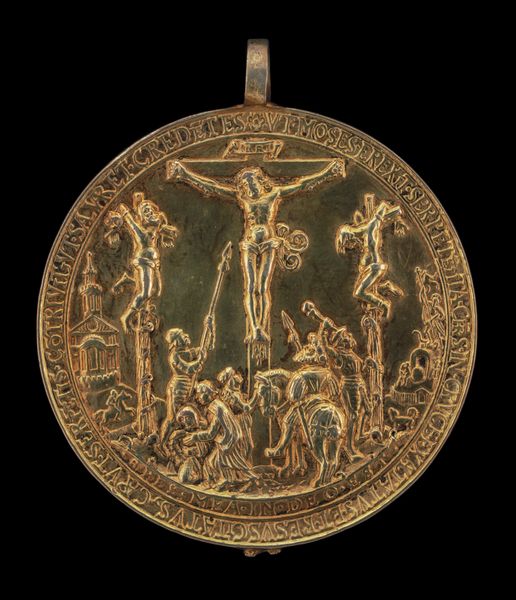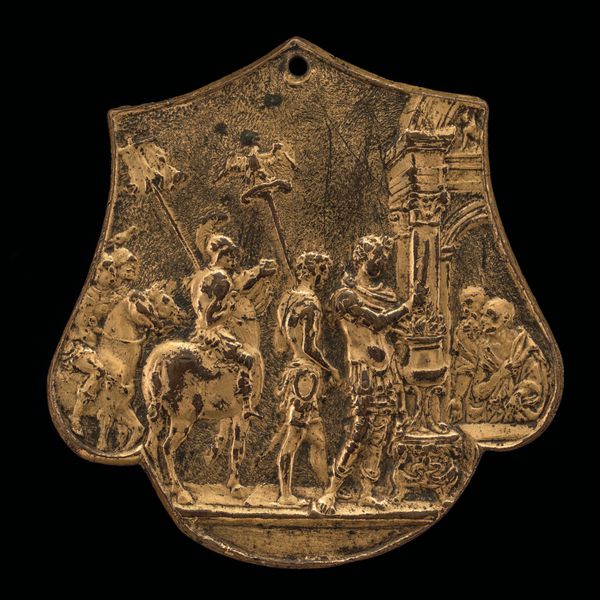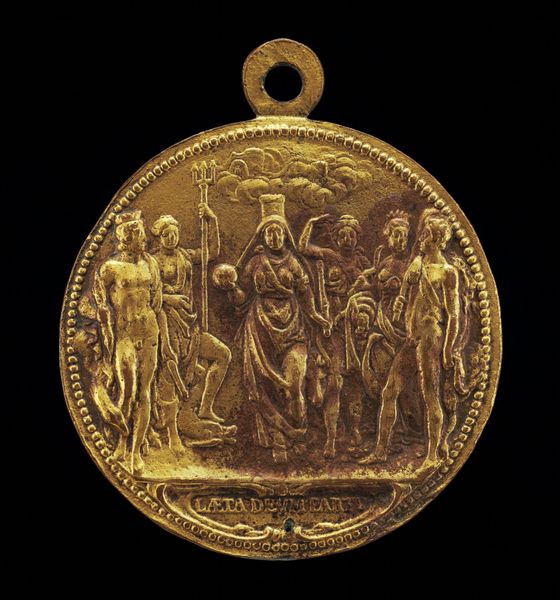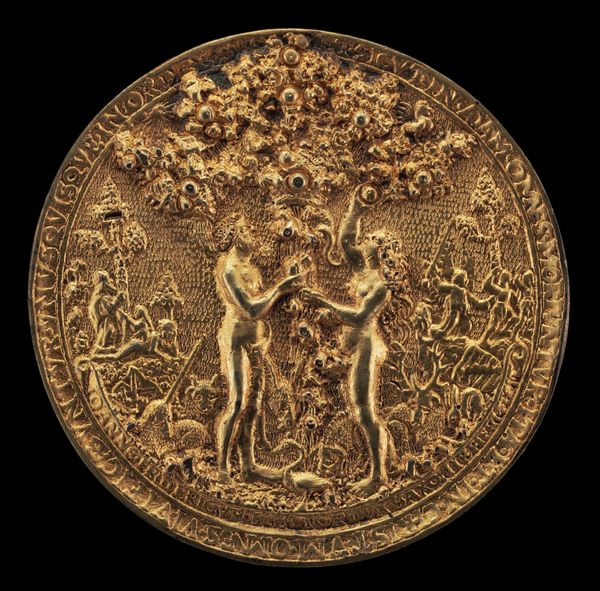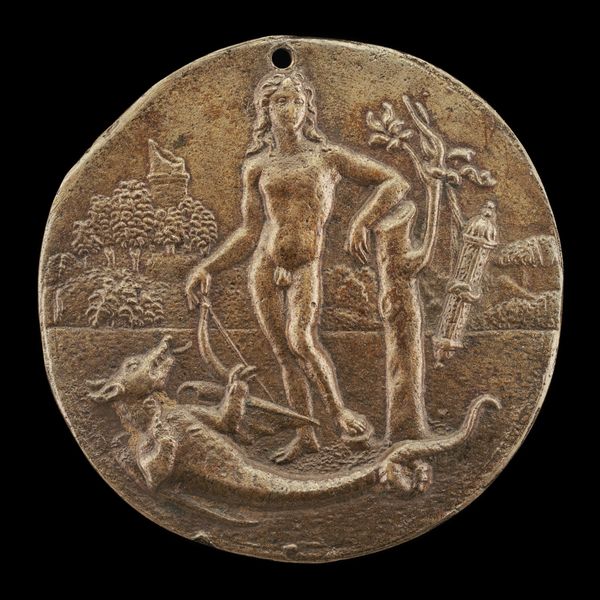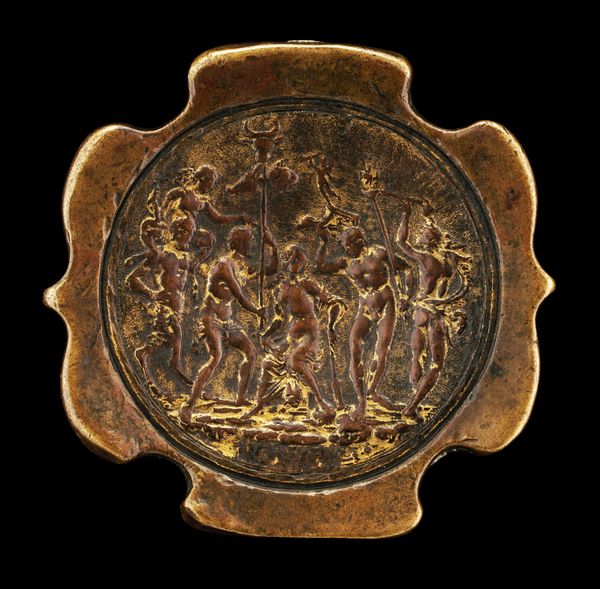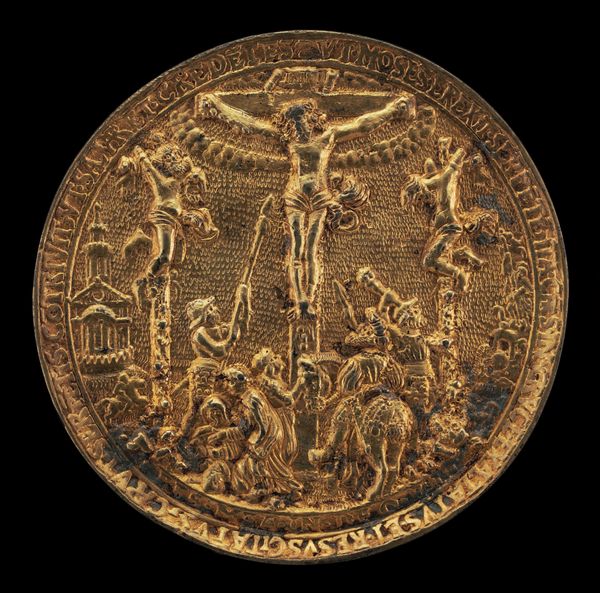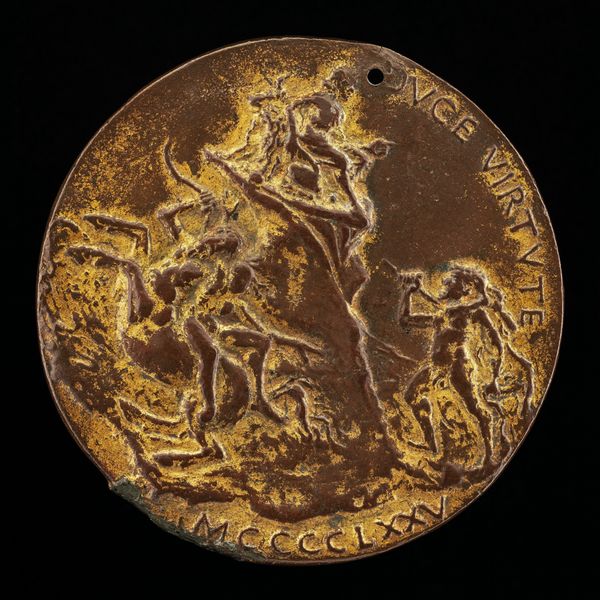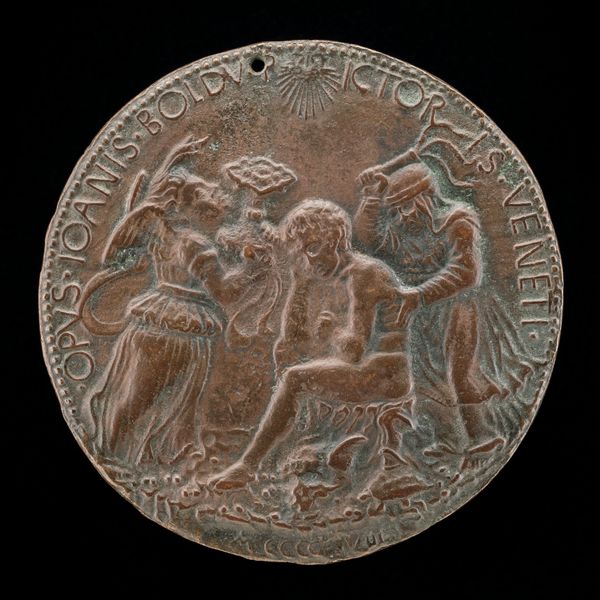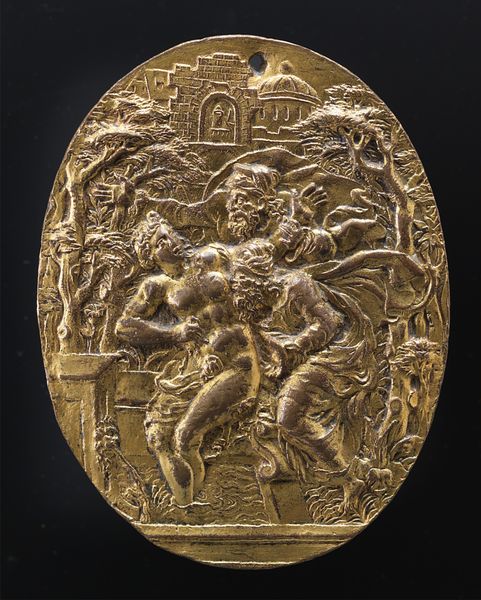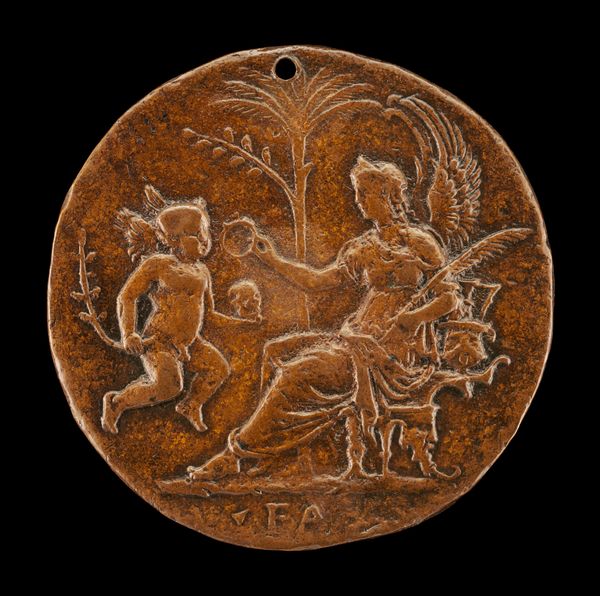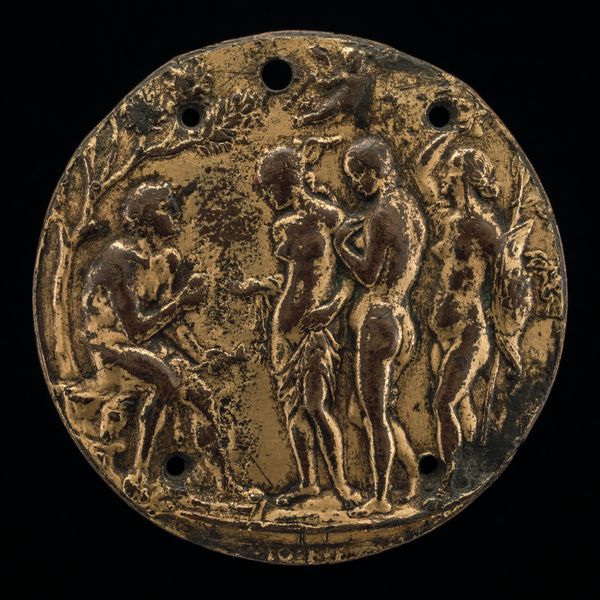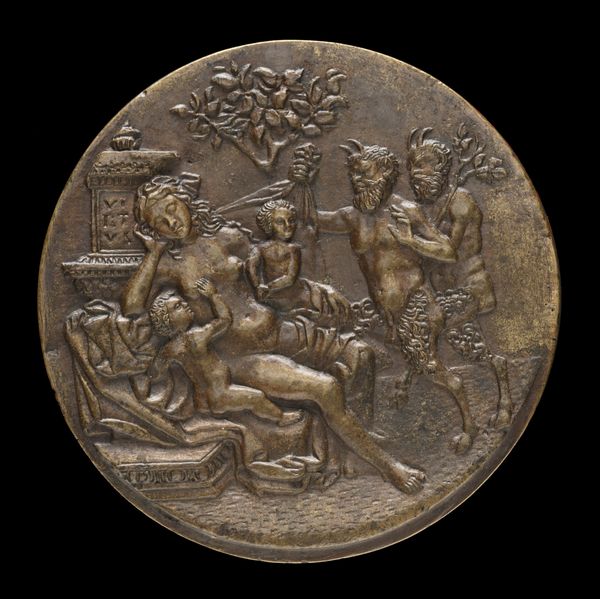![The Fall of Man [obverse] by Hans Reinhart the Elder](/_next/image?url=https%3A%2F%2Fd2w8kbdekdi1gv.cloudfront.net%2FeyJidWNrZXQiOiAiYXJ0ZXJhLWltYWdlcy1idWNrZXQiLCAia2V5IjogImFydHdvcmtzLzQ1OTdiODA5LTU5ODEtNDUwZi05M2M3LTcyOTllMjA5ZmJiNC80NTk3YjgwOS01OTgxLTQ1MGYtOTNjNy03Mjk5ZTIwOWZiYjRfZnVsbC5qcGciLCAiZWRpdHMiOiB7InJlc2l6ZSI6IHsid2lkdGgiOiAxOTIwLCAiaGVpZ2h0IjogMTkyMCwgImZpdCI6ICJpbnNpZGUifX19&w=3840&q=75)
print, metal, relief, sculpture, engraving
#
allegory
# print
#
metal
#
stone
#
sculpture
#
relief
#
figuration
#
11_renaissance
#
sculpture
#
history-painting
#
northern-renaissance
#
engraving
Dimensions: overall (diameter without loop): 6.82 cm (2 11/16 in.) overall (diameter with loop): 7.9 cm (3 1/8 in.)
Copyright: National Gallery of Art: CC0 1.0
Editor: This intricate piece is "The Fall of Man" by Hans Reinhart the Elder, created in 1536. It appears to be a metal relief, perhaps a medallion. It strikes me as a powerful, almost cautionary image, given the gravity of the subject. What do you see in this work, particularly considering the historical context? Curator: Well, this piece exemplifies the way the Renaissance grappled with theological themes within a humanist framework. Reinhart, through this work, engages with the pervasive cultural anxiety of sin and redemption that dominated 16th-century thought. Think about the rise of the Reformation and the debates about free will. This image isn't just a depiction; it’s a statement. Editor: A statement about…? Curator: A statement about the nature of choice and its consequences in a society deeply concerned with salvation. Note the visual prominence given to Adam and Eve - their very bodies taking up most of the frame; then how does the naturalism of the Northern Renaissance style heighten the drama, making their fall more human, relatable, and thus more impactful? And consider this was likely commissioned, a controlled narrative by someone in power to broadcast their message to the public. Editor: So, it's not just religious art; it's a carefully crafted piece of political messaging using religious narrative? I hadn’t considered how explicitly such pieces could function within societal power structures. Curator: Precisely! It reminds us that art isn't created in a vacuum. How is this piece placed within society and then subsequently in a collection - that’s just as important as the imagery portrayed. Museums play a critical role in constructing art's meaning, something to remember as we’re standing here, recording an audio guide for its future audiences. Editor: That's a fascinating perspective, it really gives me a greater appreciation for the artist's skill, but also for the whole social framework that produced it and still influences our understanding of it today. Curator: Indeed, understanding the past helps us understand how we attribute value today.
Comments
No comments
Be the first to comment and join the conversation on the ultimate creative platform.
